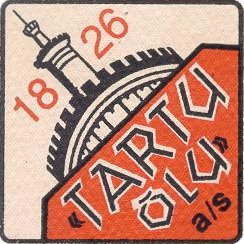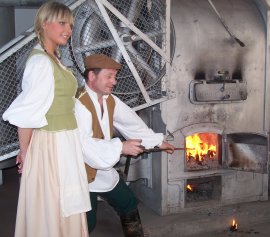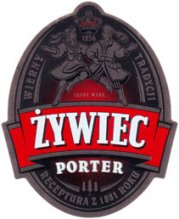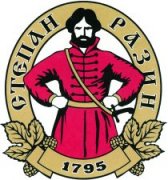 |
 |
|

|
|

|
 |
home
about
Protz
features
A-Z
books
|
|
Protz:
features
reviews
tastings
news & events
books
|

| |
Porter and Stout
by Willard Clarke , 05/2008
The Cieszyn brewery that stands fortress-proud above the small Polish town of the same name is home to one of the world's historic beer styles, Baltic Porter. Zywiec Porter is
a redoubtable 9.5% alcohol and is based on a recipe fashioned in London in the 19th century. In spite of the inexorable rise of golden lagers in central and eastern Europe, Baltic Porter and its big brother, Imperial Russian
Stout, survive and are even undergoing a small revival.
The brewery in Cieszyn was built atop a hill in order that deep, cool cellars could be used to mature the beers following fermentation. It was opened in 1847 by Archduke Friedrich Habsburg, a member of the ruling family that
controlled vast swathes of Europe until the First World War. The archduke's father told him: "Own land and brew beer and you won't go wrong, my son." The brewery made wheat beer, the style reserved strictly for the
aristocracy. But Cieszyn is only a stone's throw from the Czech border and the impact of the brewing revolution in Pilsen in the middle of the 19th century was soon felt in Poland.
|
|

|
Cieszyn switched from wheat beer to cold-fermented lager � the brewery still produces an excellent Pilsner-type beer called Brackie � but another, totally different style was also created there.

|
|
In 1881 Julius Wagner developed a recipe for a porter that was based on the Baltic Porters and Imperial Stouts exported from England to Russia and the surrounding countries. The Cieszyn brewery claims that Wagner was a Pole though his name is clearly Germanic. Whatever his ethnic origins, his recipe succeeded in launching a beer that is still popular in Poland and helps sustain the historic importance of the style.
In the 18th and 19th centuries London was a powerhouse of porter and stout brewing. Porter, first produced early in the 18th century, transformed the way beer was made. Such was the demand for porter that brewing moved from tiny backstreet brewhouses and pubs into vast commercial beer factories owned by the likes of Sam Whitbread and other members of a new entrepreneurial class ironically dubbed "the beerage".
|
At one stage, 10 breweries in London produced strong versions of porter and stout for the export market. The major brewer in the capital was Thrales, which in turn was taken over by Barclays (a Scottish-American family with interests in banking) and subsequently by Courage. London-brewed export porters and stouts created sufficient interest for the likes of Carlsberg in Denmark, Carnegie in Sweden and Sinebrychoff in Finland to brew their own interpretations of the style, which are still available today.
But the main impact was felt in Russia. Barclay's Stout had a long journey from London to Danzig [Gdansk] and then into the other Baltic States and Imperial Russia. The voyage was especially hazardous when Napoleon's
forces blockaded the Baltic ports. One consignment of beer ended up on the seabed in 1869 when the Prussian ship Oliva was wrecked. In 1974 Norwegian divers brought bottles to the surface that bore the
name �A Le Coq�. This proved to be Albert Le Coq, a Belgian who had earned his living exporting beer from London to the Baltic. Thanks to generous donations of stout to Russian soldiers who had been wounded
in the Crimea, Le Coq was awarded an imperial warrant from a grateful Tsar, which allowed the imported beers to carry the imposing title of Imperial Russian Stout.
|
|

|
Early in the 20th century, increased import duties
forced Le Coq's company to purchase a brewery within Russia. The plant was in Tartu, now part of modern Estonia. Le Coq's Russian business was short-lived. In 1917 it was nationalised by the new Bolshevik
government in Moscow and the Tartu plant concentrated on pale lagers rather than porter and stout.

|
|
The porter flag continued to fly elsewhere. At Cieszyn, Zywiec Porter accounts for 50% of production in a plant that makes 60,000 barrels a year. Porter enjoys a long and exhaustive brewing schedule.
The brewhouse uses a double decoction system: malt and water are heated in one mash vessel and then a proportion of the mash is pumped to another vessel, heated to a higher
temperature and then returned to the first vessel. Unlike the British infusion mash system, which uses "well modified malt" -- malt in which starch is close to turning into sugar - the less modified
malts used in Europe need a more exhaustive mashing regime in order to provide fermentable sugar. (left: roasting the malts)
|
At the end of the mashing period, the beer destined to become Porter is filtered in a
lauter tun and is then pumped to the copper, where it's boiled for four hours with Magnum, Nugget and Taurus hop varieties. The long boil - two to three times longer than the norm - is necessary because of the
large quantity of malt used to make a beer of such strength.
The hopped wort enjoys 15 days primary fermentation in open vessels before being transferred to the lager cellars, 15 metres deep, which were kept cool at 2 degrees Celsius with blocks of ice in a room above before the
arrival of refrigeration in the 19th century. The cellars hold 100 lagering tanks and 15,00 barrels of beer. Porter is matured for a minimum of 60 days. Fermentation and maturation involve a lager yeast supplied by the
main Zywiec plant but brewmaster Alastair Hook of the Meantime Brewery in London, who brews his own interpretation of a Victorian porter, says that when a beer is as strong as the Zywiec version it makes no
difference whether the yeast used is a lager or ale culture.
Porter is brewed with Pilsner, caramel [caramalt], Munich and roasted malts. It has a deep coffee colour, an oily, tarry nose with powerful hints of espresso coffee, liquorice, molasses, burnt
grain and dark fruit. Bitter hops, coffee, chocolate and dark grain fill the mouth, while the finish has coffee and liquorice to the fore with a good underpinning of hops, burnt grain and dark fruit.
The Cieszyn brewery was privatised in 1991 and, along with the main Zywiec brewery in the town of that name, was bought by Heineken in 1994. It's a matter of speculation how long Heineken will keep the small Cieszyn plant open but growing interest in the Porter may encourage the Dutch giant to stay its hand.
|
|

|
Porter is also brewed in Poland by another large brewing group, Okocim, in the town of Brzesko, to the east of Krakow. Okocim is now owned by Carlsberg. Confusingly, the 8.3% Porter carries the image of a billy goat on the label, which is the universal symbol for Bock beer, brewed mainly in Bavaria. Does Okocim consider its Porter to be a dark lager � or is it using the billy goat as a sign of strength? There's no doubt that the beer, brewed in a plant founded in 1845, is firmly in the Baltic Porter tradition. It has a spicy, herbal note along with liquorice and coffee notes and a smooth, satiny finish.
In Russia, porter hangs on by a fingernail, though the arrival of Guinness there may spark greater interest in dark beer. In St Petersburg, the giant Baltika brewery owned by Carlsberg, brews Baltika No 6, which the company
says is based on the English Baltic Porter style. It is 7% and is brewed with pale, caramalt and roasted malt, maltose syrup and hops. The beer has a big liquorice and roasted grain aroma and palate with a dry, bitter and
grainy finish.
Also in St Petersburg, the Stepan Razin brewery, founded in 1795 and now owned by Heineken, makes a superb 8% Porter. It's matured for 90 days and is brewed with pale,
caramalt and roasted malt and hopped with Nugget and Goldings varieties.
The aroma is rich with roasted grain, coffee, chocolate and vine fruits, with dark grain, coffee and spicy hops building in the mouth. The long and complex finish is balanced between rich malt and bitter hops, with powerful contributions from dark fruit, chocolate and coffee.
|
|

|
The return of Le Coq

|
|
In 1971, after years of wrangling, the Soviet government agreed to pay �240,000 to the descendants of Albert Le Coq as compensation. Following the collapse of communism and the emergence of Estonia as an independent country, the Olletehas brewing group has reverted to the name of Le Coq and has restored the production of Le Coq Porter. The 6.5% beer is brewed with pale, black and chocolate malts and roasted grain and is hopped with German varieties. It has a bouquet of roasted grain, bitter chocolate and molasses, underpinned by spicy hops. Rich flavours - roast, burnt fruit, chocolate and earthy hop resins - fill the mouth. The finish is rich and warming, dominated by dark fruits, bitter roasted grain, espresso coffee and a firm hop bitterness.
In England, Harvey's Imperial Extra Double Stout (9%) restores a style lost to drinkers when Courage stopped brewing Imperial Russian Stout, a brand it had acquired from Barclay Perkins in London. Harvey's negotiated with
Le Coq's family to use the original recipe for the beer. It's brewed with Maris Otter pale malt along with amber, brown and black malts and is hopped with East Kent Goldings and Fuggles. The beer is bottle fermented, has a cork stopper and is matured for 12 months before it is released to trade. It has a rich aroma of vinous fruit, fresh leather, tobacco, smoky malt and peppery hops. Vine fruits, hop resins, liquorice, roasted grain and bitter hops dominate the palate with a long and complex finish with warming alcohol, dark fruits, fresh tobacco, roasted grain and spicy hops to the fore. (B United imports the beer to the United States.)
|
Versions to look out for
- Denmark: Carlsberg Carls Stout Porter (7.8%)
- Sweden: Carnegie Stark Porter (5.6%)
- Finland: Sinebrychoff Koff Porter (7.2%)
- Britain: Pitfield 1792 Imperial Stout (9.35); Samuel Smith Imperial Stout 7%); Bartrams Comrade Bill Bartram's Egalitarian Anti-Imperialist Soviet Stout (6.9%); Thornbridge Brewery, Derbyshire: St Petersburg Imperial Russian Stout (7.7%). .
- United States: North Coast Brewing Old Rasputin Russian Imperial Stout (8.9%); Rogue Imperial Stout (11%); Odell Brewing Co, Fort Collins, Colorado: Imperial Stout (8.2%).
*Zywiec Porter is only occasionally seen in Britain but the company that imports Zywiec brands is considering bringing the beer in on a regular basis. See www.bdd.net.
|
|
home
about
Protz
features
A-Z
books
|





